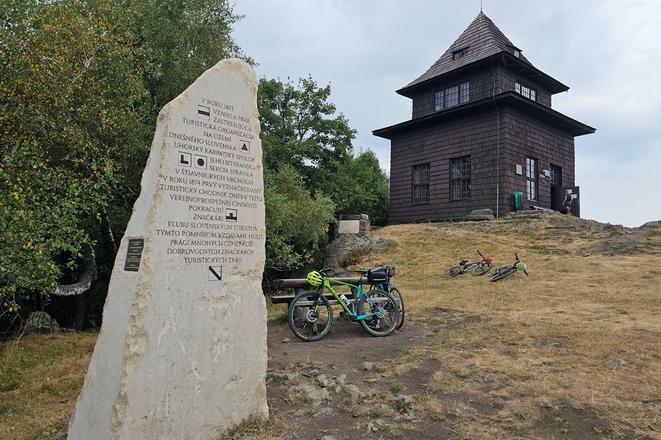“We can check whether the Sitno knights are not coming out to help Slovakia,” I said to my companion while we were setting off from Počúvadlo lake in central Slovakia to hike up the mythical Sitno Hill, referring to an old legend. It says that there are cursed knights hidden in the hill, ready to help the country when it needs.
The legend of the Sitno knights
In the reign of Pribina (9th century), Prince Stojmír was the lord of Sitno Castle. When he felt that the final moment of his life was coming, he handed over ruling power to his older son Tyra, and encouraged him and his younger son Želibor to live in concord. But the sons faced each other in combat soon. The old sage and high priest Nákon tried hard to prevent the fratricidal encounter, but did not succeed. When the brothers’ massed armies were facing each other, Nákon imposed a curse on them: to atone for their sins, the soldiers were confined to the rock hall of Sitno, which are not supposed to reopen until the Slovak nation calls for their help. Every seven years, the old guardian knight ascends to the top of Sitno and calls in all directions whether their time is yet at hand. If no answer comes, he closes the banded gate and returns to the halls.
Unfortunately, we did not encounter any knights. We ‘just’ enjoyed the meadows and forests we passed on the way up and down, learned about the hill and its volcanic past, saw the ruins of the castle that used to stand on a rocky plateau on its hillside, and appreciated the view from what is considered to the first tourist facility in present-day Slovakia.
Volcanic past
Sitno is actually a remnant of a super-volcano. Today with its height of 1,009 metres above sea level, it is the highest hill of Štiavnické Vrchy, a mountain range remaining after what once was one of the largest volcanoes on Earth. This super-volcano started spewing lava approximately 15 million years ago. It used to be about 5,000 metres high and exploded with a force the equivalent of 100,000 times the atom bomb dropped on Hiroshima.
The eruptions brought veins rich in gold, silver and other precious metals to Earth’s surface, a prerequisite for the region to gain wealth from the mining of precious metals. The centre of the volcano later collapsed and created a caldera about 15 km long and 22 km wide, with Sitno on its edge.


 The lookover tower on the Sitno hill. (source: Jana Liptáková)
The lookover tower on the Sitno hill. (source: Jana Liptáková)